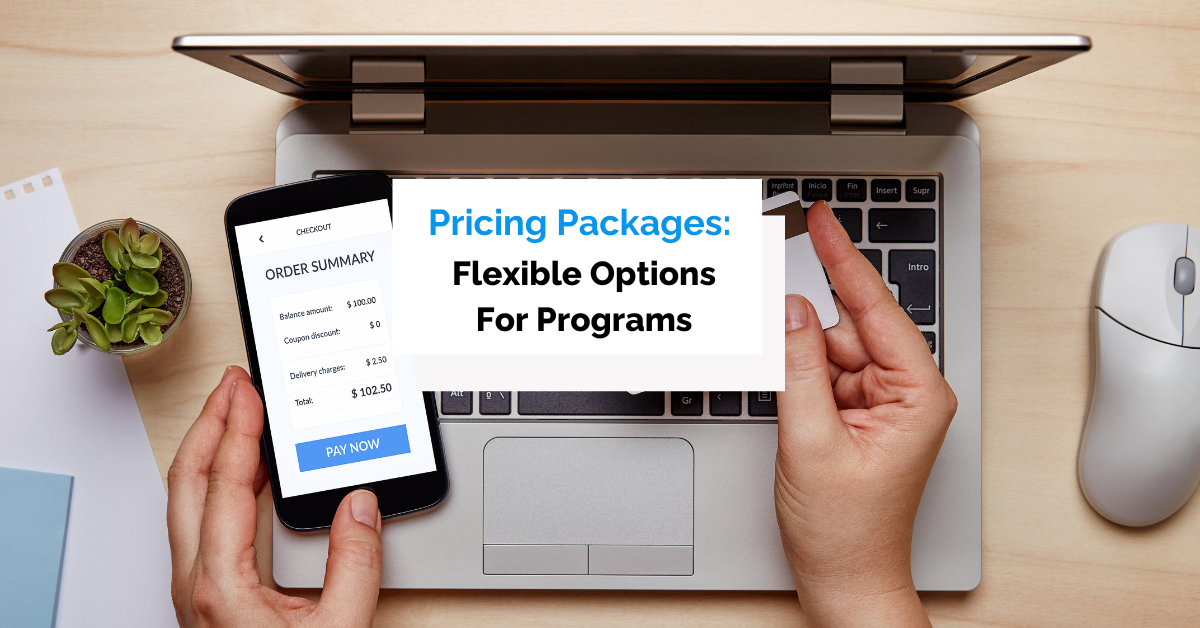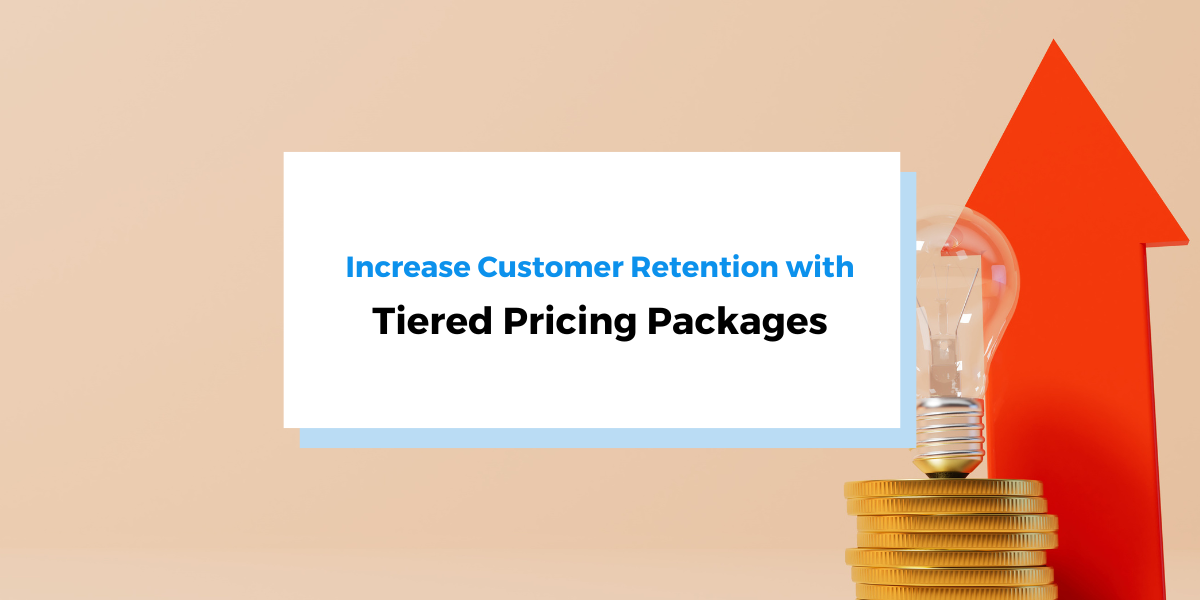Summer camp, like any other business, thrives and survives on revenue.
That might sound cynical, but there is no way around it—if you don’t have a good enrollment strategy, you won’t bring enough campers in, and your summer camp, sooner or later, won’t have the funds to function.
The good news is, there are strategies you can employ to increase enrollment.
That’s why in this article, we’ll discuss what those strategies are, why they are important, and how to use them so you can get the most out of each one.
Ready? Let’s start!
- Offering Tours to Campers and Parents
- Streamlining the Registration Process
- Catering To Campers’ Unique Interests
- Keeping in Touch Throughout the Year
- Improving the Camper Retention Rate
- Conclusion
Offering Tours to Campers and Parents
Most parents aren’t entirely comfortable with sending their children to an unfamiliar camp, with people they don’t know, and to an environment they can see only in photos online.
However, there is a way to make that experience much less nerve-racking.
By simply setting aside some time to host a tour and an open house, you can put parents and children at ease and show them what you offer.
For instance, here’s how Cora Carter from L.A. Summer Camps describes what visitors can experience if they attend their tour:
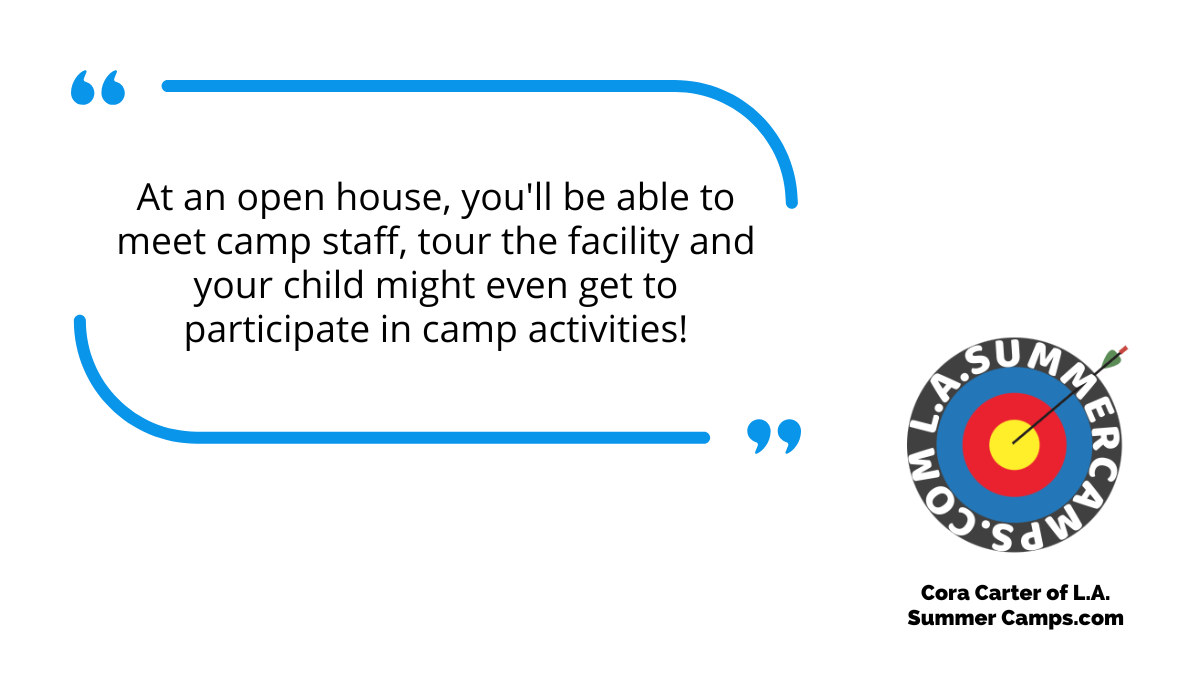
Illustration: Regpack / Data: Los Angeles Summer Camps
All of that can settle the nerves of many parents, especially if they see their children enjoying the tour of the camp.
Tours are also a great opportunity for campers and parents to not only get familiar with the environment but also to ask camp staff any questions they may have in person.
That can save them the time they would have otherwise spent trying to find answers online, emailing the staff, or trying to reach them on social media.
When you put all of those benefits together, it’s clear that camp tours are an activity you should consider offering.
That could be all it takes to nudge interested campers and parents toward enrolling, thus boosting your summer camp participation numbers.
When it comes to offering tours to campers and parents, you can approach that in several ways.
One of them is utilizing your website. For example, Glisson Camp and Retreat Center offer all the information about their open house directly on their website.
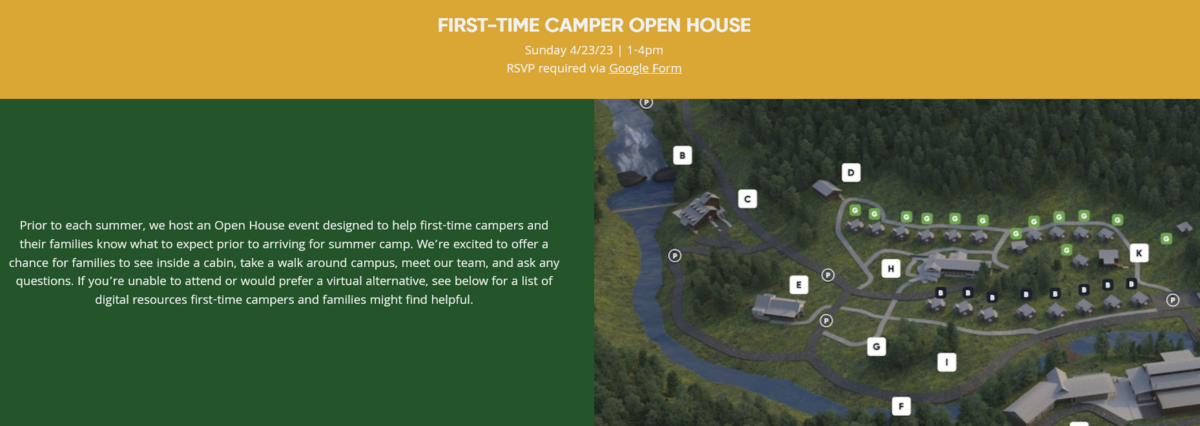
Source: Glisson Camp and Retreat Center
They have the tour date, a registration form, a camp map, event details, and other resources campers and parents might find helpful.
Apart from using your camp’s website to share camp tour information, you can also take advantage of social media.
Henderson Family YMCA offer information about their tour on Twitter with a colorful visual that’s hard not to notice.
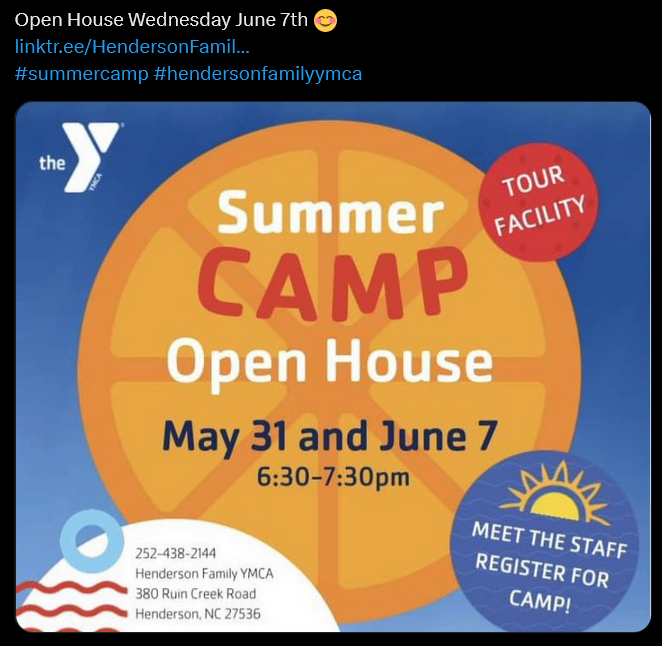
Source: HendersonFamilyYMCA on Twitter
The essential information, like the tour’s time and date, location, and purpose, is already in the post.
For those wanting to know more, there is a link to the camp’s website.
Regardless of the way you inform potential attendees about tours of your camp, offering them can be very beneficial for your enrollment.
They are like a live advertisement for your camp, so don’t miss out on the potential of that opportunity.
Streamlining the Registration Process
If you took our suggestion of offering tours of your camp to families, you most likely have many of them interested in enrollment.
Providing them with a smooth registration process is the next step.
How you approach the registration process can make a significant difference in enrollment.
If you make it too complicated or unnecessarily long, you could end up with a half-empty camp during the summer instead of a full one.
You can offer outstanding facilities, exciting activities and have stellar camp personnel, but if the registration process is tedious, many people will give up and look for other solutions.
And once they abandon the registration process, it’s unlikely that they’ll come back to it.
For instance, data from The Manifest indicates that about two-thirds of people who abandon an online form never finish it.
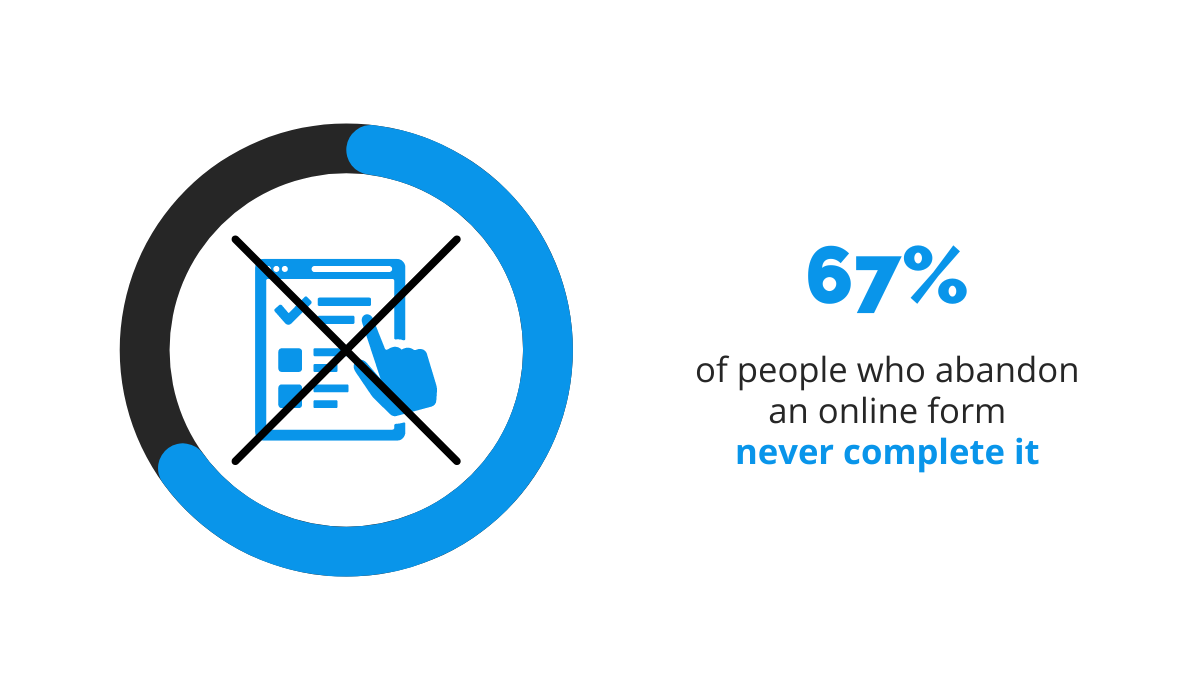
Illustration: Regpack / Data: The Manifest
You certainly don’t want your registration form to be a part of that abandonment percentage.
So, what can you do to offer a streamlined registration process?
First, you should make your enrollment forms simple and to the point.
It’s important to collect all the essential information about a child and their parents, as well as the child’s medical information. However, you don’t need to go into too much detail.
Below, you can see a part of a simple registration form and the data it has been designed to collect about a camper.
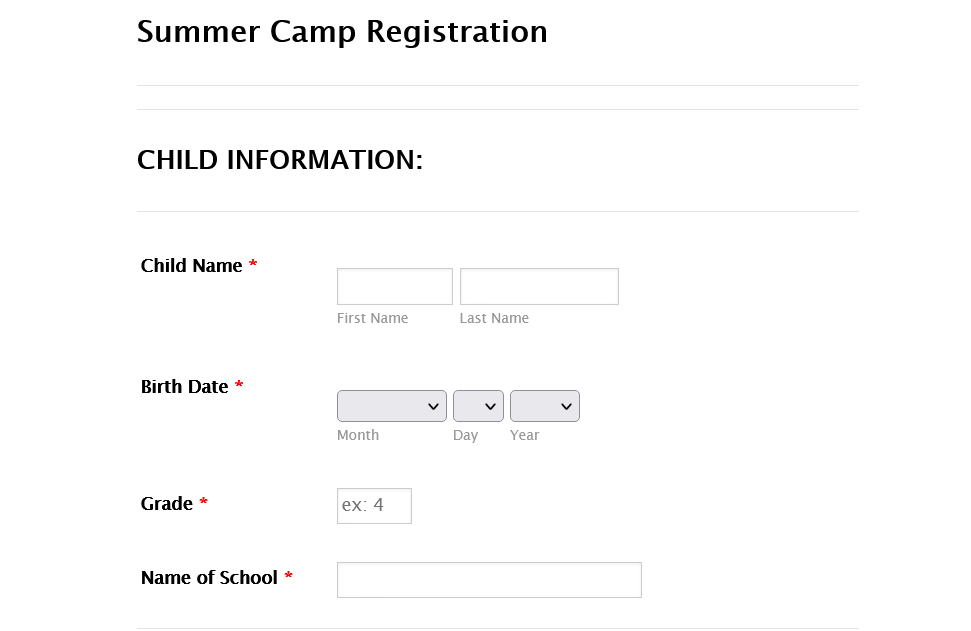
Source: Jotform
Combined with some important information about medical history and allergies, that is enough for registration.
Second, you should use camp registration software that makes it easy to design forms like that and simplify every subsequent part of the registration process.
For example, Regpack allows you to build custom registration forms by dragging and dropping fields you want to include in the form.
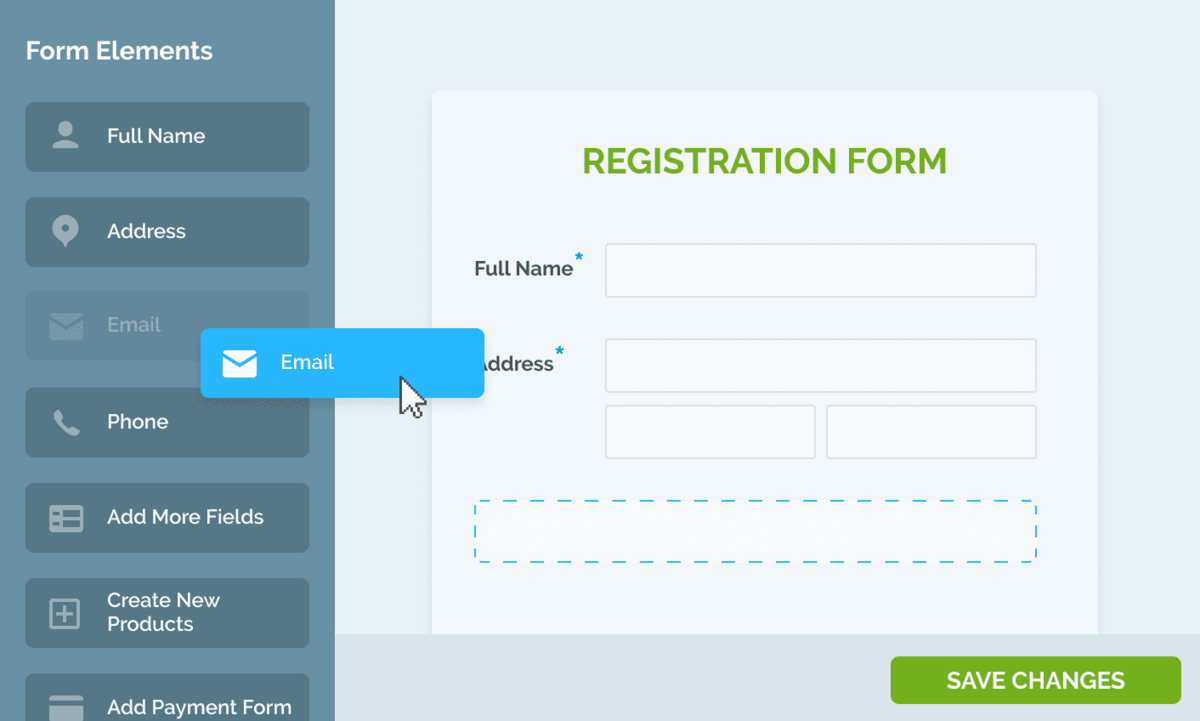
Source: Regpack
The registration forms you create in Regpack follow conditional logic.
In other words, the registrants’ answers influence the questions they get next.
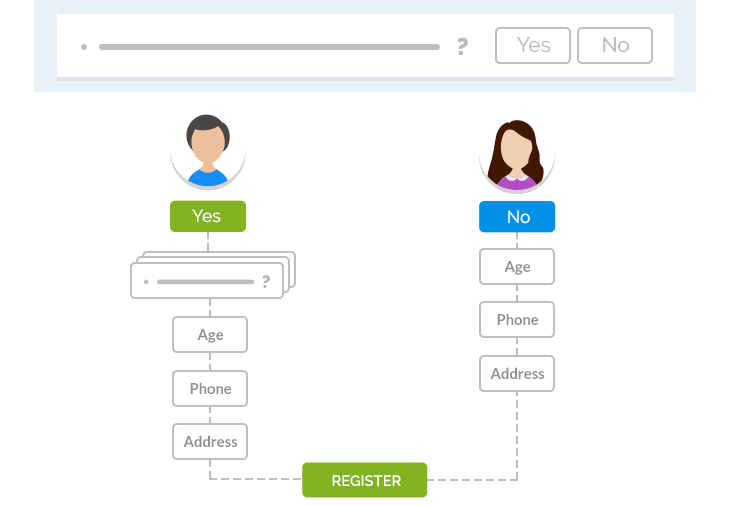
Source: Regpack
That makes the applicants feel like the forms are customized for them while simultaneously streamlining the registration process.
In addition to that, for a smooth registration process, you should provide multiple payment plans and options to choose from.
Regpack allows you to collect payments on your website, and you can create flexible payment plans and options for your camp visitors.
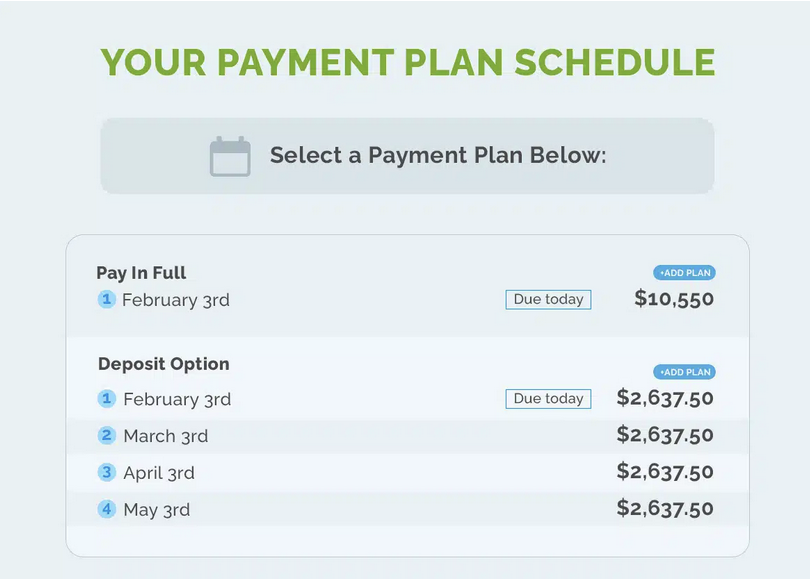
Source: Regpack
All in all, a camp registration software solution like Regpack can make the registration process a breeze.
With every part of the process laid out and easy to complete, you will undoubtedly increase enrollment.
Catering To Campers’ Unique Interests
The activities you offer at your summer camp can be entirely up to you and can depend on how you want to market your camp and your staff’s expertise.
However, considering your campers’ interests is also a good idea.
Are there a lot of campers interested in arts and crafts? Take this into account and organize workshops that cater to them.
For example, ARTS Summer Camp provides many opportunities for its campers to express themselves through art.

Source: ARTS – Art for Rural Texas on Facebook
Offering activities that cater to the specific interests of your campers can also help you in future enrollment efforts.
By showing that you care about offering activities your campers are actually interested in, you build an audience that will look forward to enrolling in upcoming camps.
So, there are clear benefits to considering the interests of your campers. But you might be wondering: how can you find out what they’re interested in?
Figuring that out can be simple if you create a good form and, more importantly, analyze the answers the campers provide.
You can simply ask them what kinds of activities they’d be interested in on the enrollment form itself. Below, you can see what that part of the form can look like:
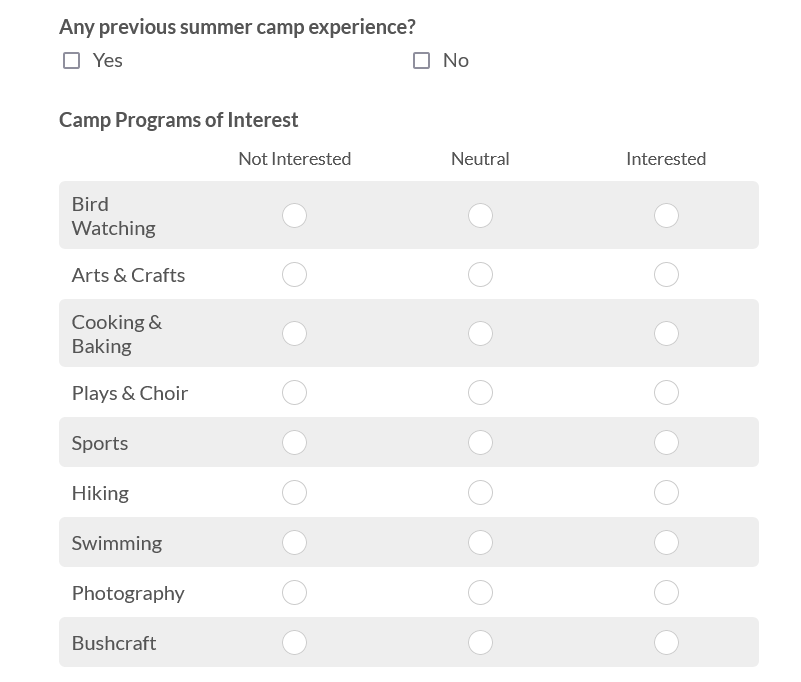
Source: wpforms
As you can see, the applicants only need to click on one of three choices for every camp activity based on how interested they are in participating.
When you collect their answers, you can analyze them and shape your activities according to your campers’ interests.
For instance, are many interested in sports but only a few in photography? You can use that information to organize more sports activities and fewer photography workshops.
As you continue to collect and analyze your campers’ preferences before every summer camp, you can detect trends and shape your program more precisely.
A good camp registration software with data filtering can be immensely useful for that. It can help you filter applicants based on any data, including their interests.
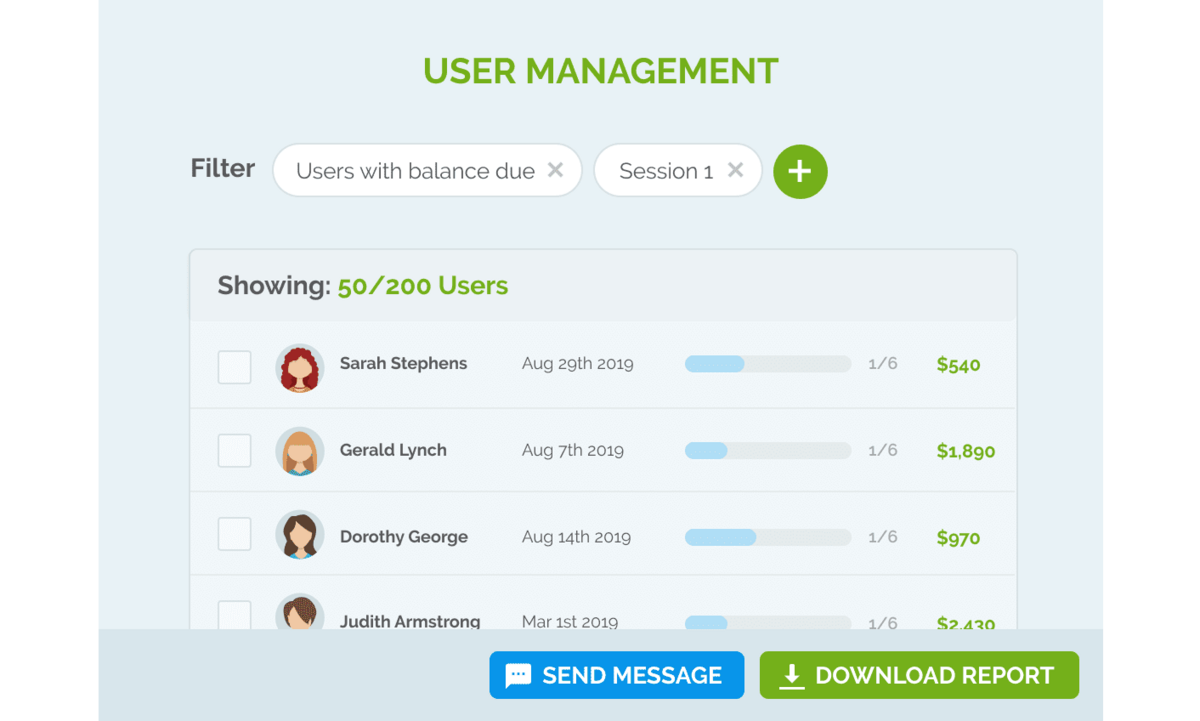
Source: Regpack
If it has features that allow you to create reports out of those insights, that’s even better.
With reports, you get a comprehensive overview of all the data, trends, and information you need in order to provide activities that your campers actually want.
And a camp that makes it all about its campers and their preferences will always be full.
Keeping in Touch Throughout the Year
One of the efficient strategies to increase your summer camp enrollment is to remember the families who have already participated in your camp.
That means you should keep your camp on their minds even after it’s over.
A year between two summer camps is a long time. You can use that time to remind your campers and their parents of how fun it was for the children to spend a part of their summer with you and your staff.
By doing that, you can increase the chances of keeping that experience fresh in their minds all year long, but also them enrolling again when the time comes.
There are several ways you can keep in touch with your campers and their parents throughout the year.
One of them is by occasionally sharing the previous year’s memories on social media.
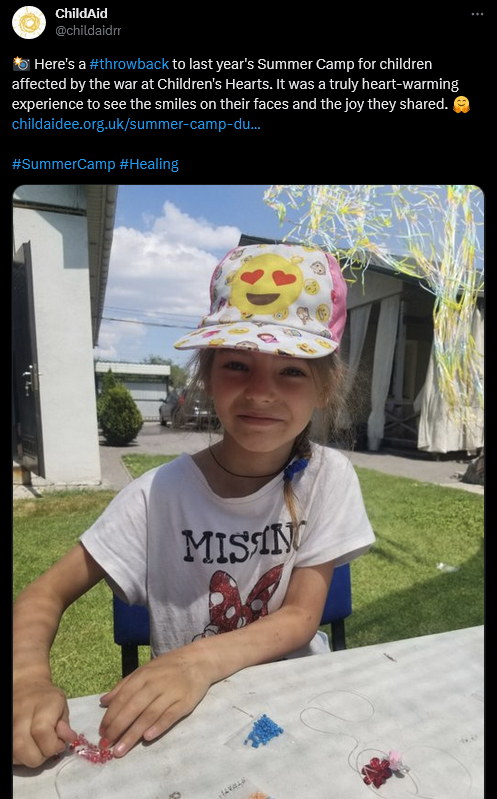
Source: ChildAid on Twitter
As you can see above in a tweet from ChildAid, a throwback to the previous summer camp season is a great way to do that.
You most likely have many photos from various camp activities, so you can regularly keep the memories of the good times in your camp alive.
Pair the photos with a post where you remind the followers of the fun they had and evoke positive emotions, like in the post above.
That way, you will increase the chance of them enrolling again and inspire new campers to enroll when they see how great the camp was in the years before.
Another great way to keep in touch throughout the year is by email.
For instance, you can send the parents emails with a reminder for an upcoming summer camp, like the one you see below.
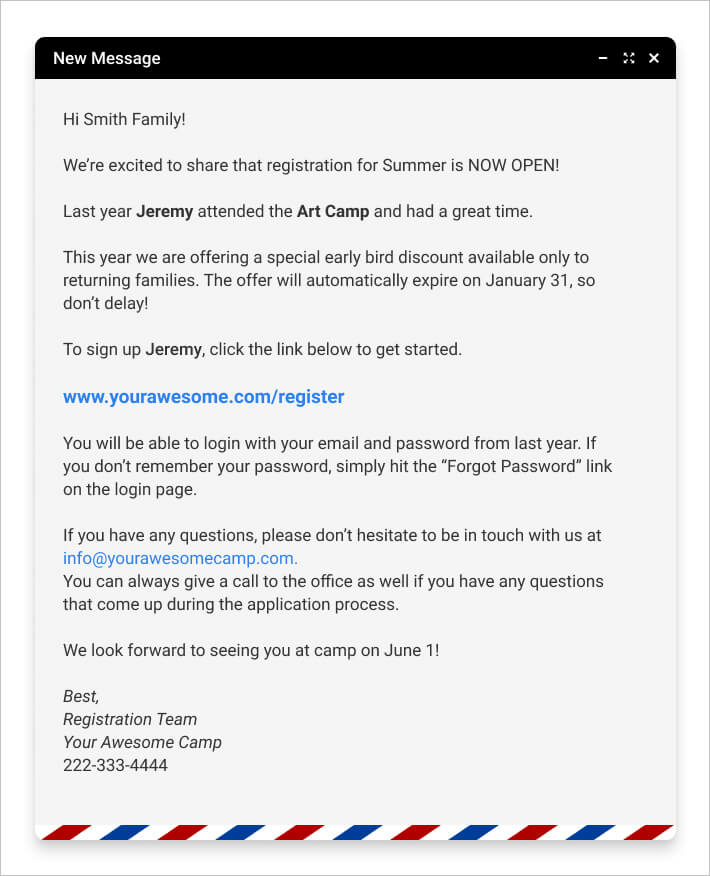
Source: Regpack
As you can see, the email reminds the parents of the fact that their child had a great time at the summer camp.
It also provides them with some essential information about signing up for an upcoming camp, gives registration details, and offers an early bird discount.
You can create multiple emails like that and automate triggers to send them when parents complete a specific action.
You can also personalize emails for every recipient with information taken from registration forms if you use camp registration software.
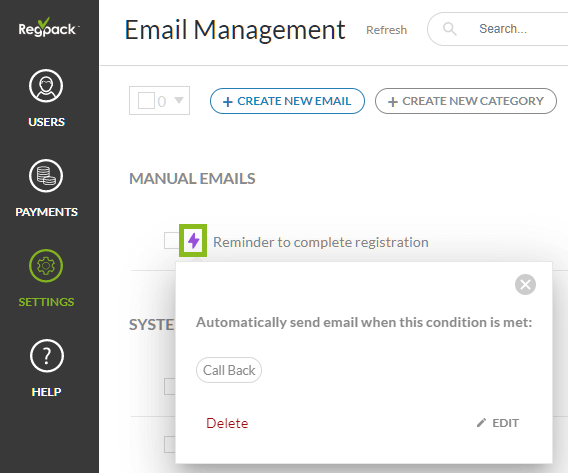
Source: Regpack
Keeping in touch with families between summer camps is an excellent opportunity to bring great memories to the surface and show them why they should enroll once again.
But let’s dive deeper into camper retention in the following section.
Improving the Camper Retention Rate
Campers who regularly attend your summer camp can help you significantly increase enrollment.
After all, after you’ve already made efforts to attract campers by offering them free tours, creating a smooth registration process, and acknowledging their needs, you surely want them to come back in the following years.
Repeat customers are also very important for your business.
According to data from Harvard Business School, even a small increase in customer retention can lead to a considerable increase in profits.
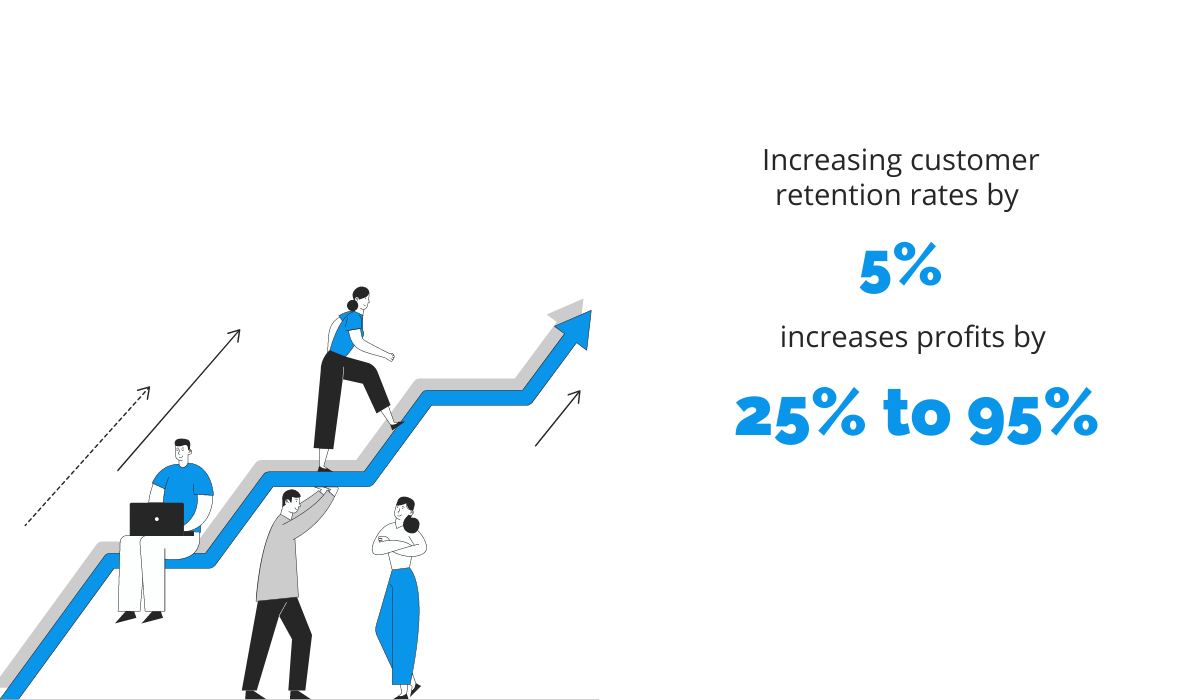
Illustration: Regpack / Data: Harvard Business School
Therefore, improving the camper retention rate not only ensures that your time and effort invested in attracting campers and their parents don’t go to waste but also helps boost your profits.
So, how can you increase the number of campers that return to your camp year after year?
By gathering their feedback and implementing it.
For instance, if most children weren’t satisfied with certain parts of your program, would you organize things the same way again next year?
Well, if you want campers to enroll again, you will most likely make some improvements.
But to know what works well in your camp and which elements require more attention, you should simply ask.
You can do that by sending a survey after the camp and asking children and their parents to rate specific aspects of the camp experience.
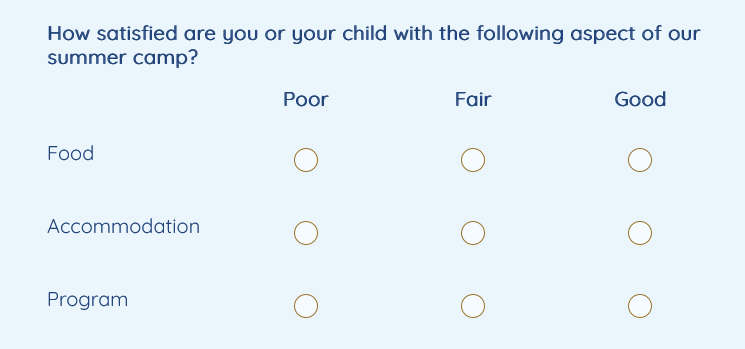
Source: 123 Form Builder
Above, you can see what a part of that survey can look like.
After gathering feedback from families, you can analyze it with camp registration software, the same way you can analyze the data from the registration forms we discussed earlier.
A comprehensive software solution like that will allow you to create forms and surveys for any purpose you need, including collecting feedback.
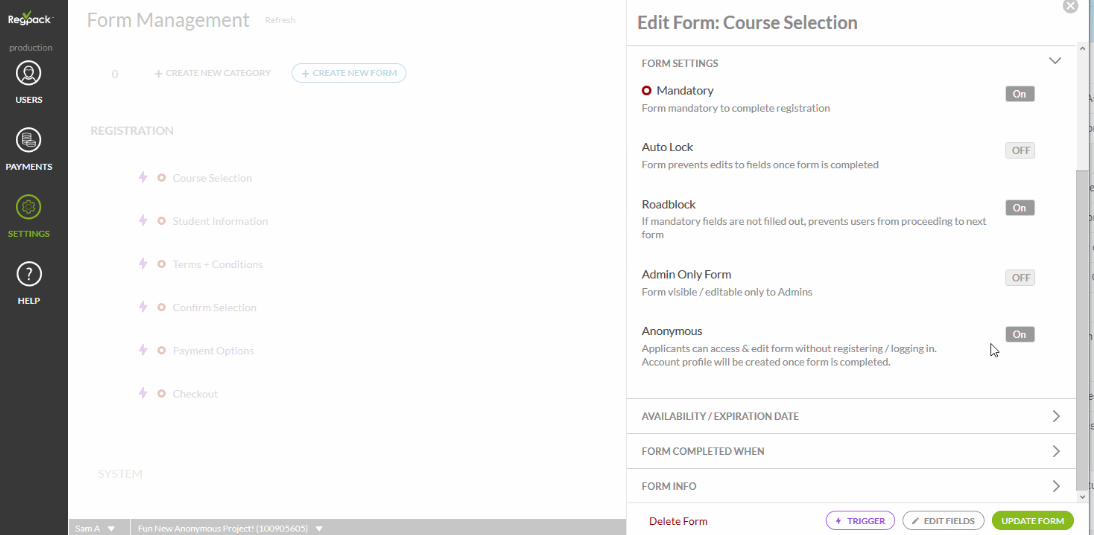
Source: Regpack
The feedback you collect and analyze can help you improve the summer camp experience you offer, thus bringing more campers back every year.
Also, you can use that feedback to let your campers, old and new, know that you’ve listened to the feedback and taken it seriously.
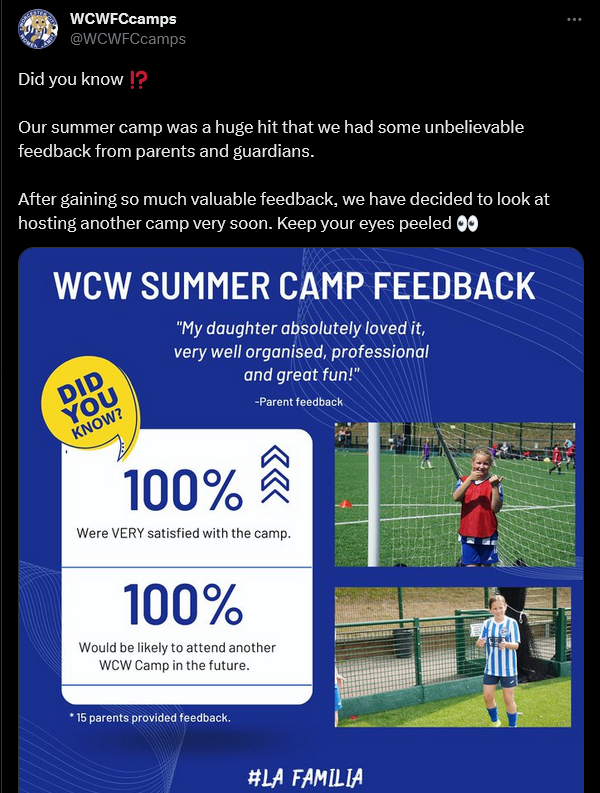
Source: WCWFCcamps on Twitter
As you can see above, even feedback can be an opportunity to promote your camp, especially if it is positive.
Overall, retaining your campers can bring many benefits to your business and improve not only the profit but also the quality of the summer camp experience you offer as a whole.
Conclusion
Enrollment is essential for your summer camp.
If the enrollment is good, that means you can organize another summer camp next year, make it more diverse, provide more activities, improve your facilities, hire better staff, etc.
On the other hand, if the enrollment is subpar, it can run your camp to the ground.
Luckily, if you follow the strategies from this article, you’ll be able to follow the first path—the path of bettering the camp experience you offer and enrolling more campers each year.



